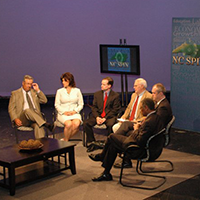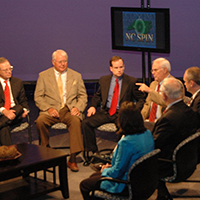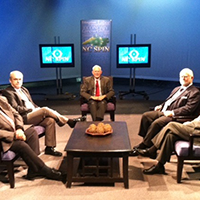North Carolina still isn’t very urban
Published October 30, 2025
By John Hood
According to the latest count by the US Census Bureau, North Carolina has added yet another metropolitan area. Has our state become an urban colossus?
Not really, although most of our state’s cities are growing at robust rates. What actually happened was that the Census Bureau reclassified the Pinehurst-Southern Pines region as a metropolitan area. It used to be considered a micropolitan area. What distinguishes the former from the latter is the presence of an urban core of at least 50,000 people.
After the bureau released its updated model in 2023, there were 16 metropolitan statistical areas lying wholly or partly within North Carolina. They were, in order of population size, Charlotte-Concord-Gastonia, Raleigh-Cary, Greensboro-High Point, Winston-Salem, Durham-Chapel Hill, Wilmington, Asheville, Fayetteville, Hickory-Lenoir-Morganton, Jacksonville, Burlington, Greenville, Rocky Mount, Goldsboro, Pinehurst-Southern Pines, and the North Carolina part of the Virginia Beach-Chesapeake-Norfolk metro.
The Census Bureau then groups some metropolitan and micropolitan areas together — again, on the basis of commuting patterns — into what are called combined statistical areas. That’s the scale at which we can see the Triangle region, the Piedmont Triad, the greater Charlotte region, the Sandhills, and so on.
One purpose of the bureau’s statistical areas is to convey the extent of economic integration. Each area, whether metropolitan or micropolitan, has a principal city. If at least a quarter of the people in a nearby county commute into the principal city to work, that places them within the statistical area.
It’s a useful exercise — as long as we don’t misinterpret what it means. By the Census Bureau definition, the vast majority of North Carolinians live in metropolitan areas. Most do not, however, consider themselves to be residents of an urban area. Nor should they. The 22,055 residents of Anson County, for example, live within the Charlotte-Concord-Gastonia metro. If Anson is urban, there’s no such thing as rural.
Populous ring counties such as Johnston (in the Raleigh-Cary metro), Randolph (in the Greensboro-High Point metro), Henderson (in the Asheville metro), and Brunswick (in the Wilmington metro) still contain large stretches of low-density housing and farmland. Even the likes of Wake, Mecklenburg, Durham, and Guilford have more than a few undeveloped parcels.
Moreover, to confuse “metropolitan” with “urban” — and then to distinguish urban areas from “rural” areas — is to miss the point entirely. The largest group of state residents are neither urban nor rural. They live in the suburbs.
That is, at least, how they see it. In last year’s exit poll of North Carolina voters, 53% said their neighborhood was suburban, with 28% picking urban and 20% rural. A recent survey of adults by High Point University had it at 44% suburban, 18% urban, and 34% rural. A Carolina Journal Poll of likely voters had it at 44% suburban, 13% urban, and 40% rural. Differences in wording and sampling methodology aside, it’s clear that only a small minority of North Carolinians identify as urban dwellers.
None of which is to say our cities aren’t critical engines of innovation, dynamism, and growth, or that metropolitan statistical areas aren’t useful tools for describing our state’s commuting patterns, economic relationships, and regional cultures.
But let’s not mistake handy labels and statistical tools for lived experience. The vast majority of North Carolinians live in suburbs, exurbs, and towns. Most will never live in urban cores. They don’t want to. Indeed, an increasing number don’t want to work in downtowns, either. They prefer remote employment, hybrid employment, or workplaces dispersed within and among the spokes of the metropolitan wheel, not ones concentrated within its hub. They like being close to grocery stores and other retailers offering frequently purchased items but don’t appear to mind driving longer distances for other shopping, entertainment, and recreational experiences.
If developers, policymakers, and transportation planners pretend otherwise, if they substitute their own preferences for revealed ones, they’ll end up wasting a great deal of time and money.
Call it sprawl if you like. North Carolinians won’t care. They call it home.
John Hood is a John Locke Foundation board member. His books Mountain Folk, Forest Folk, and Water Folk combine epic fantasy and American history.







